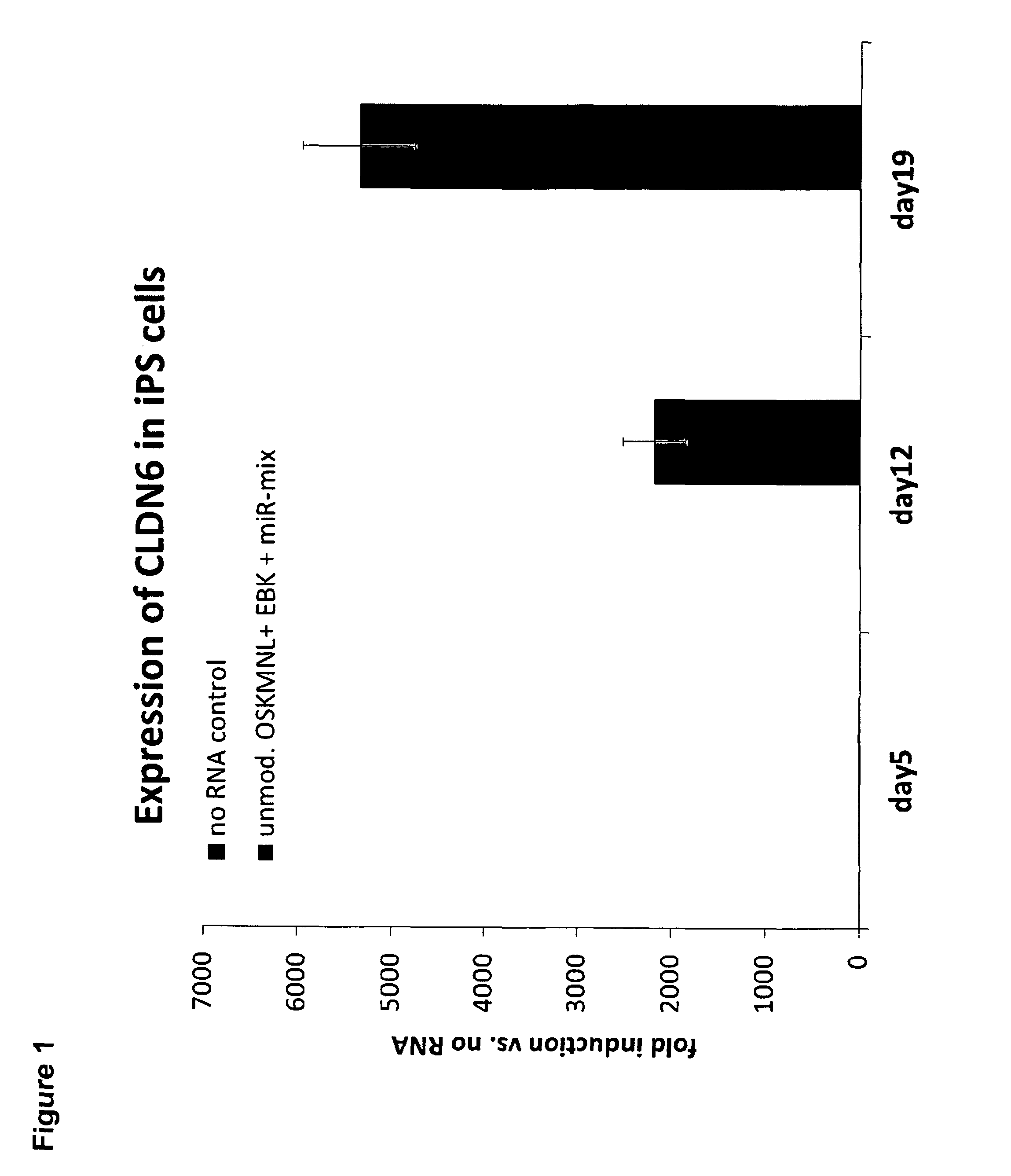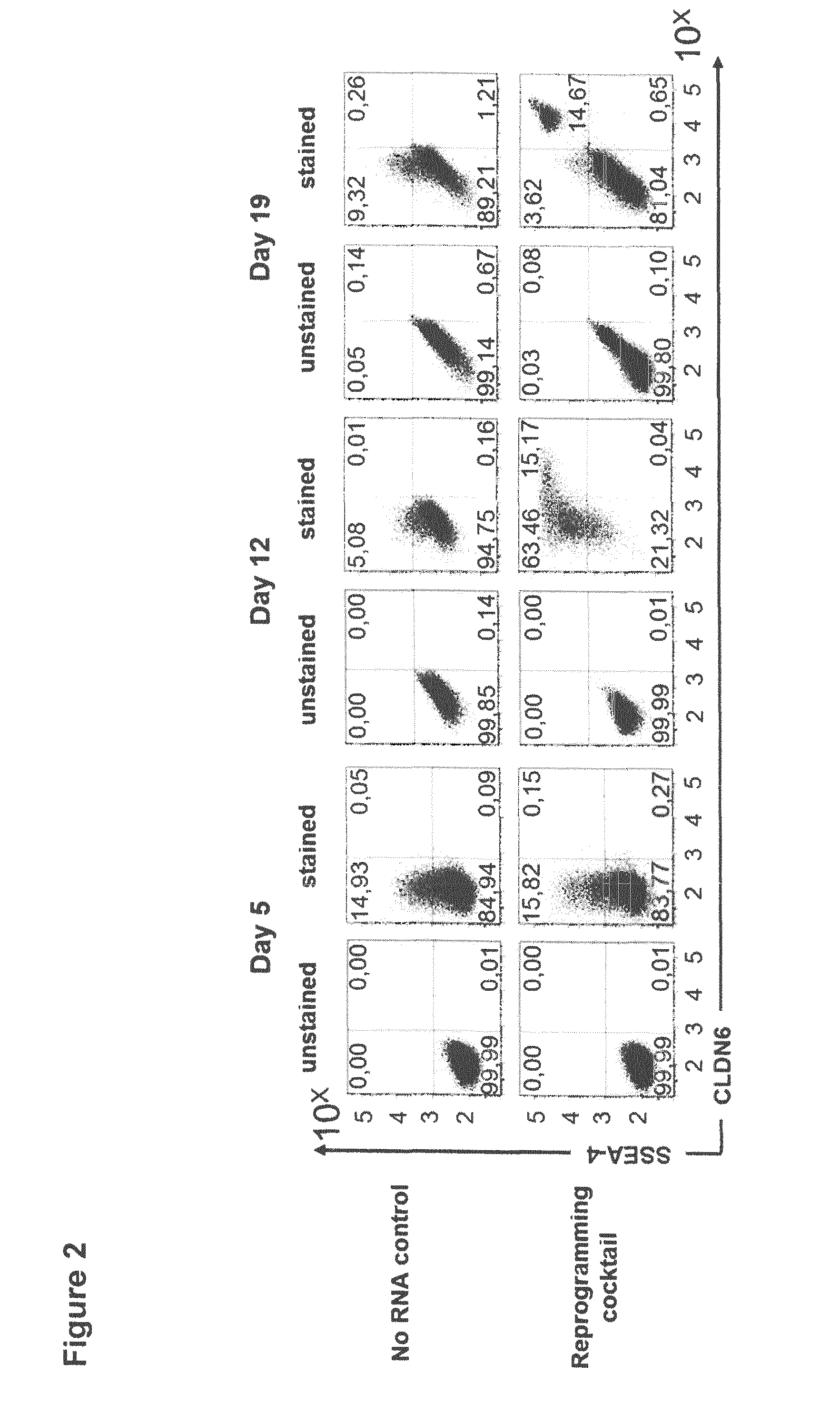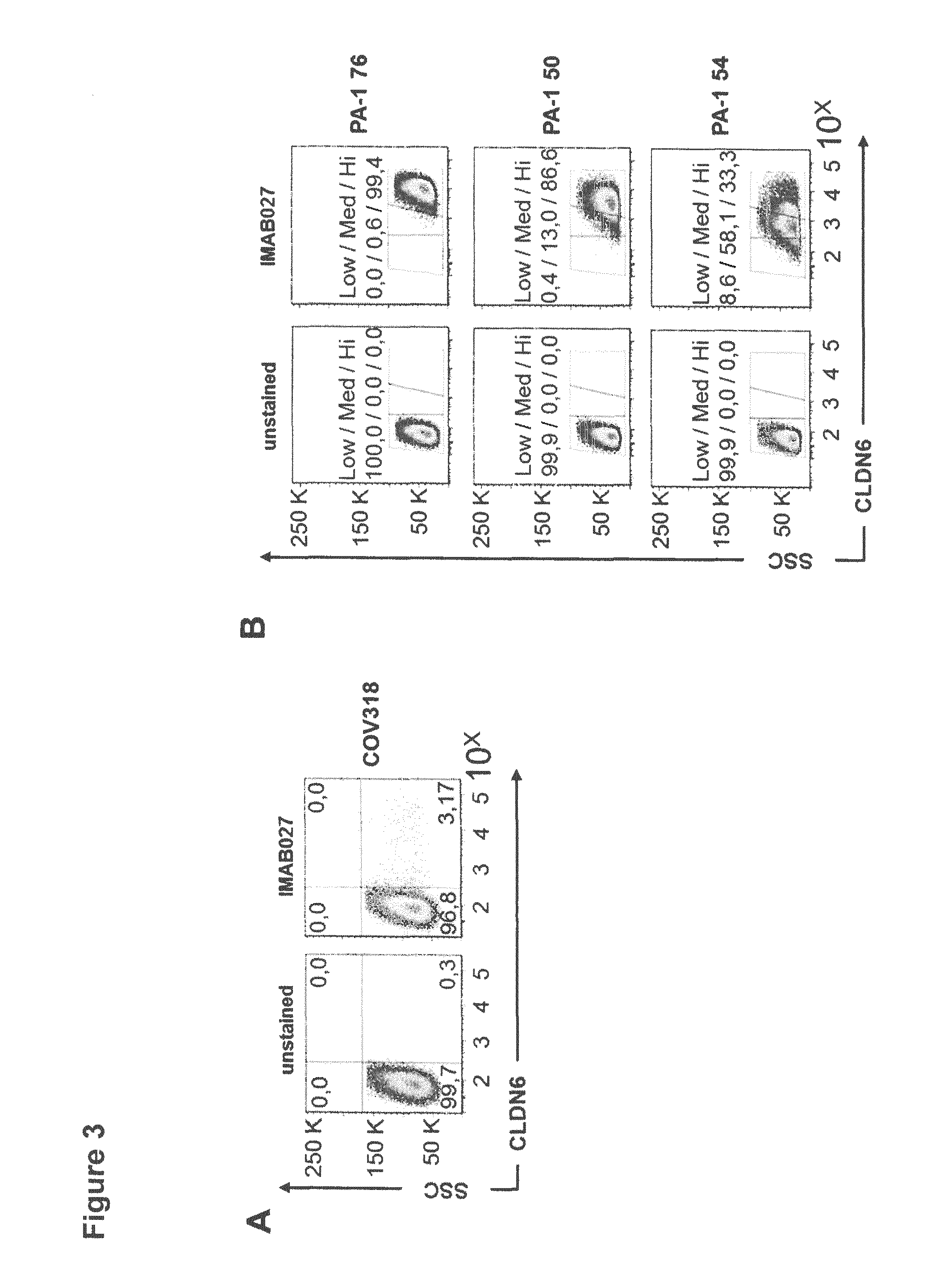Diagnosis and therapy of cancer involving cancer stem cells
a cancer stem cell and cancer stem cell technology, applied in the field of cancer stem cell diagnosis and therapy, can solve the problems of lack of efficacy and toxicity, cancer stem cell treatment is believed to be relatively ineffective at targeting and impairing cancer stem cells, and the side effects of chemotherapy are significant and often dangerous, so as to enhance the anti-cancer effect of chemotherapy and prolong the life. the effect of the effect of survival
- Summary
- Abstract
- Description
- Claims
- Application Information
AI Technical Summary
Benefits of technology
Problems solved by technology
Method used
Image
Examples
example 1
CLDN6 is Expressed on the Surface of Induced Human Pluripotent Stem Cells
[0365]To analyze if CLDN6 is expressed in human induced pluripotent stem cells (iPSC), the transcript expression of CLDN6 was analyzed in neonatal HFF (human foreskin fibroblasts, System Bioscience) at several time points of treatment with a reprogramming cocktail (unmodified OSKMNL+EBK+miR-mix; consisting of in vitro transcribed (IVT) RNA of OSKMNL=transcription factors OCT4, SOX2, KLF4, cMYC, NANOG und LIN28, IVT-RNA of EBK=IFN-escape proteins E3, K3 und B18R and a miRNA mix consisting of miR-302a / b / c / d and 367; according to the protocol described in PCT / EP2012 / 04673 or mock transfected HFFs (no RNA control) by quantitative real-time RT-PCR (qRT-PCR) using an ABI PRISM 7300 sequence detection system and software (Applied Biosystems with QuantiTect SYBR green Kit (Qiagen)). The cells were cultured in Nutristem serum-free medium (Stemgent, Cambridge (Mass.)) supplemented with 10 ng / ml bFGF and 0.5 μM Thiazovivi...
example 2
CLDN6 is Important for Colon Formation of Ovarian Cancer Cells
[0370]A potent assay to analyze CSC-like properties of tumor cells is the colony formation assay. Using this assay, one can easily examine self-renewal capacity and tumor formation potency of single tumor cells. To analyze if CLDN6 plays a role in tumor formation, we have chosen on the one hand COV318, an ovarian tumor cell line which shows only a subpopulation of CLDN6 positive cells, and on the other hand PA-1, a homogenously CLDN6 expressing cell line, carrying a stable lentiviral small hairpin RNA (shRNA) mediated knockdown of CLDN6 (clones PA-1 50, PA-1 54); cf. FIG. 3.
[0371]Cells were stained for CLDN6 with 1 μg / ml IMAB027-AF647 for 30 min at 4° C. and were afterwards sorted by FACS (fluorescence activated cell sorting) using a BD FACSAria cell sorter regarding their CLDN6 expression. 500 (PA-1 50, PA-1 54) or 700 (COV318) cells of the CLDN6-positive or -negative subpopulation were sorted directly into wells of a 6-...
example 3
CLDN6 is Co-Expressed with CSC Markers CD24, CD90 and CD44 in the Ovarian Cancer Cell Line
[0373]The use of specific surface marker expression profiles is a common strategy for the identification and isolation of CSCs from solid tumors and cell lines. Surface markers used in the literature for the isolation of CSCs from ovarian cancers include CD44, CD24, CD90, CD34, CD117 and CD133. In order to analyze if we can identify CSC sub-populations in ovarian cancer cell lines which contain a small sub-population of CLDN6 positive cells, we set up a FACS panel comprising antibodies against these surface markers (Table 1). Further, we also included an antibody for the detection of CLDN6 in the panel to investigate the percentage of co-localization of CLDN6 with the well-established CSC markers, thus judging the potential of CLDN6 to serve as a marker for CSCs. For this purpose, 1E6 cells of the cell line COV318 were stained for 30 min at 4° C. with the indicated amounts of antibodies (see Ta...
PUM
| Property | Measurement | Unit |
|---|---|---|
| volume | aaaaa | aaaaa |
| dissociation constant | aaaaa | aaaaa |
| dissociation constant | aaaaa | aaaaa |
Abstract
Description
Claims
Application Information
 Login to View More
Login to View More - R&D
- Intellectual Property
- Life Sciences
- Materials
- Tech Scout
- Unparalleled Data Quality
- Higher Quality Content
- 60% Fewer Hallucinations
Browse by: Latest US Patents, China's latest patents, Technical Efficacy Thesaurus, Application Domain, Technology Topic, Popular Technical Reports.
© 2025 PatSnap. All rights reserved.Legal|Privacy policy|Modern Slavery Act Transparency Statement|Sitemap|About US| Contact US: help@patsnap.com



